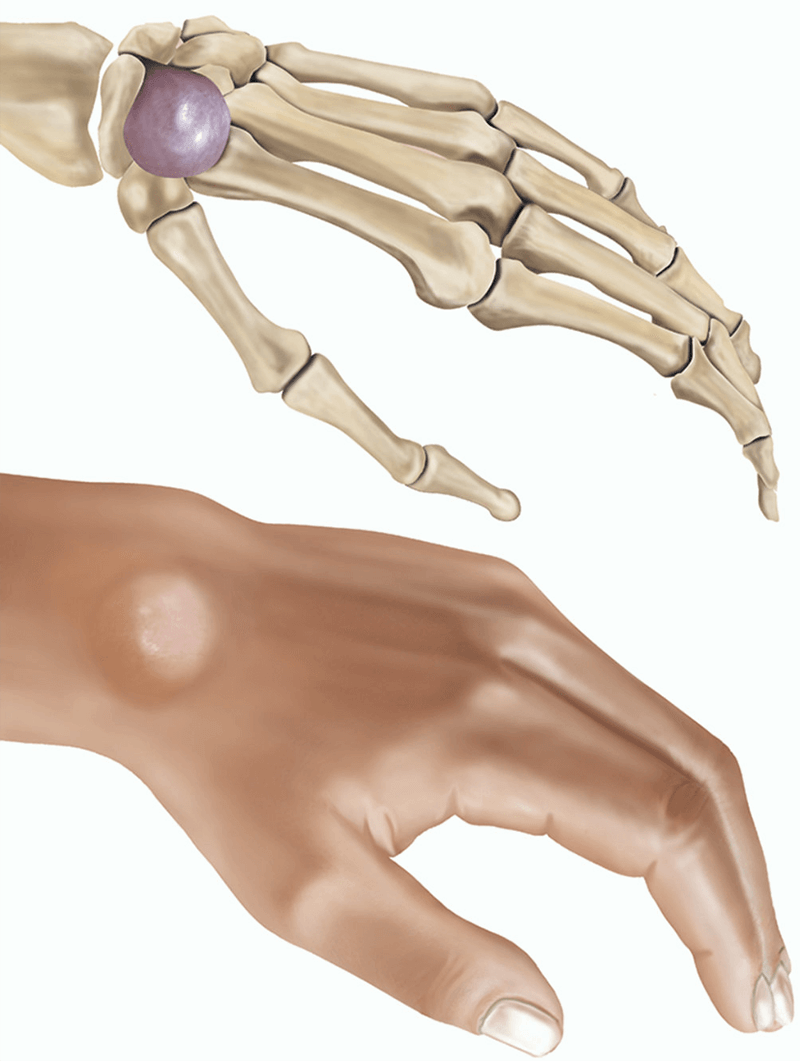What is a ganglion?
A ganglion is a lump under your skin that contains fluid.
Ganglions usually form near joints. 3 in 4 ganglions form near the wrist. They are also found on your ankle and foot.
The fluid in the ganglion comes from a joint or tendon through a narrow channel.
What are the benefits of surgery?
The lump and any discomfort from it should settle. Surgery gives the best chance of preventing the ganglion from coming back.

Are there any alternatives to surgery?
A ganglion will often disappear or become less painful after a year or two. If your ganglion is not causing much trouble it is best to leave it alone.
The fluid can be taken out of the ganglion using a needle.
Your doctor may also inject the ganglion with a steroid (cortisone).
What does the operation involve?
Various anaesthetic techniques are possible. The operation usually takes 15 to 30 minutes.
Your surgeon will separate the ganglion from the nearby tendons, nerves and blood vessels. They will remove the ganglion from where it comes out.
How can I prepare myself for the operation?
If you smoke, stopping smoking now may reduce your risk of developing complications and will improve your long-term health.
Try to maintain a healthy weight. You have a higher risk of developing complications if you are overweight.
Regular exercise should help to prepare you for the operation, help you to recover and improve your long-term health. Before you start exercising, ask the healthcare team or your GP for advice.
Speak to the healthcare team about any vaccinations you might need to reduce your risk of serious illness while you recover. When you come into hospital, practise hand washing and wear a face covering when asked.
What complications can happen?
General complications of any operation
- bleeding
- infection of the surgical site (wound)
- allergic reaction to the equipment, materials or medication
- venous thromboembolism
- chest infection
Specific complications of this operation
- damage to an artery
- damage to small nerves near the ganglion
- continued aching or stiffness where the ganglion was
- severe pain, stiffness and loss of use of your arm or leg
- recurrence of a ganglion
Consequences of this procedure
- pain
- unsightly scarring of your skin
How soon will I recover?
You should be able to go home the same day.
Regular exercise should help you to return to normal activities as soon as possible. Before you start exercising, ask the healthcare team or your GP for advice.
The joint where the ganglion was can continue to ache.
Some ganglions come back after a few months or years.

